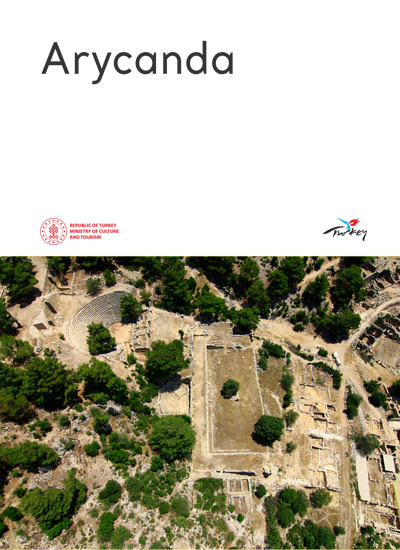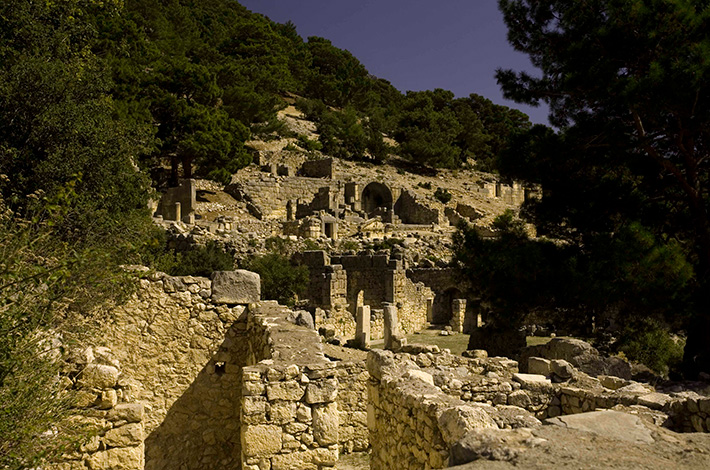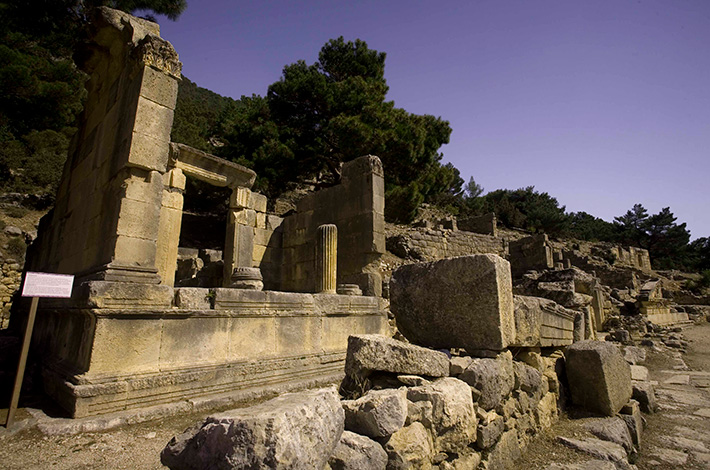Arycanda is one of the oldest settlements in the ancient Lycian region. This beautiful city is located in the borders of Arif Village, in the middle of the Finike-Elmalı road in Antalya. The name Arycanda means 'place next to the high rock' in the ancient Luwian language, which is fitting as the city was built on the slopes of a steep cliff. Its location was likely chosen for its defensive advantages. The vicinity also has numerous water springs. Despite being far from the sea, Arycanda was located on the main trade routes of the region, which enabled the city's development. It grew as a safe accommodation, particularly during Roman times, and was enriched by the timber trade. Although the city was completely abandoned due to earthquakes and Arab raids, it continues to fascinate visitors today with its well-preserved structures and splendor. The oldest remains found in the settlement are the rock tombs and the Temple of Helios, the god of the sun, dating back to the 4th century BC. Arycanda experienced its most prosperous period during the 2nd and 3rd centuries AD, with many of the existing buildings dating back to this time. The Odeon, a notable structure, dates back to the reign of Emperor Hadrian. The small but well-preserved theatre is located directly behind the Odeon. The most magnificent structure of Arycanda that has survived to the present day is the 'Great Bath - Gymnasion Complex'. Other existing structures include the stadion, agora with its shops, Bouleuterion, and villas with mosaic floors. The largest religious structure in the settlement is the basilica, which dates back to the beginning of the 4th century AD. Christianity was legally accepted in 313 AD, making it one of the earliest structures of this religion. The necropolis holds monumental tombs. The waterways that transport spring water to the city are still visible. Channels under the main streets were used to distribute the water throughout the city. Arycanda is an impressive city with historical buildings and panoramic views over the valley. The ancient city can be visited under pine and cedar trees without being exposed to excessive sunlight.
ARYKANDA ARCHAEOLOGICAL SITE



